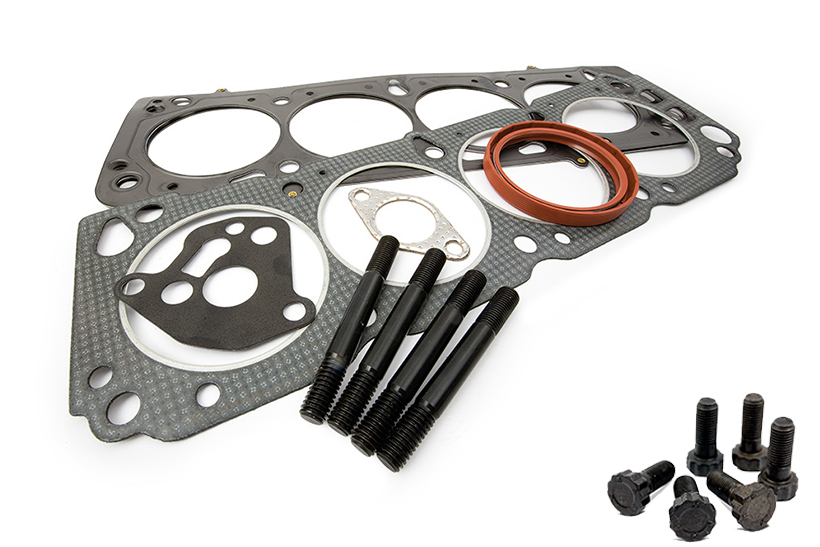Without gaskets and fixings an engine wouldn’t run – in fact, it would be a mere pile of very expensive bits. Here’s everything you need to know about head gaskets.
As with different engine parts, there are many different types of gaskets and fixings available for your engine. So, when tuning your car, don’t neglect the gaskets! Uprating these will add reliability and allow your engine to work harder.
To find out exactly what’s what in the world of performance gaskets and uprated fixings, read on…
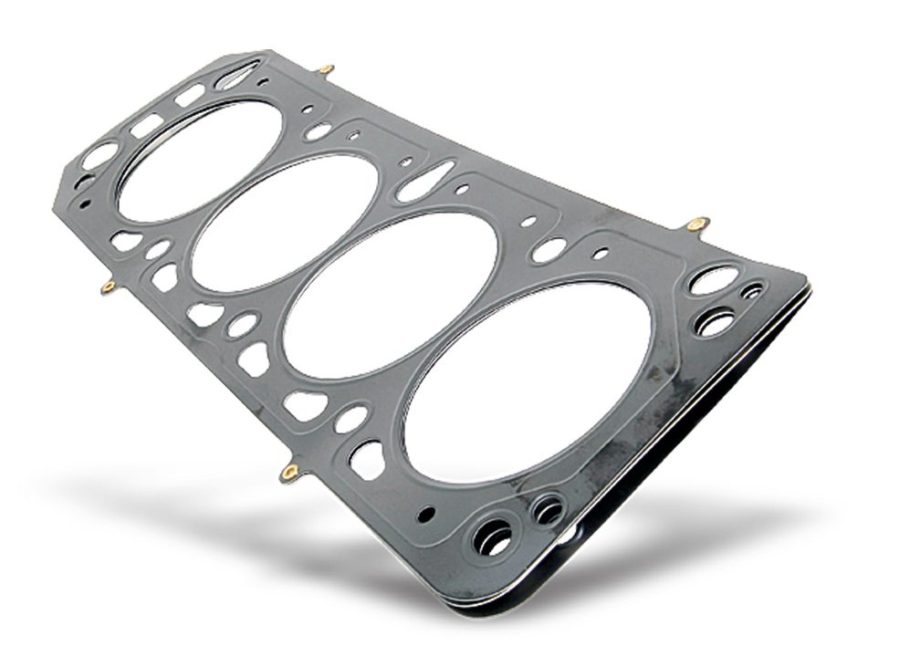
Standard Head Gaskets
The head gasket is probably the most stressed gasket in the whole engine, as it has to seal oil ways, water ways, fuel/air mixture and exhaust gases, and has to operate under the extreme temperatures and pressures of mating the cylinder head to the block. This is why the head gasket is amongst the most common gaskets to fail in a high performance engine.
Older head gaskets like those used in the original Lotus twin-cam engine were actually made from copper and asbestos, but modern-day standard gaskets are made from a composite material (which is often incorrectly referred to as a fibre gasket). The composite material is coated in a wax-like finish, and the head gasket will usually feature a bead of silicone around the oil and water ways to help create a better seal.
The way a head gasket seals the oil and water ways is pretty conventional, but the most difficult job a head gasket has to do is create a seal between the cylinder head and block around the combustion chamber. Immense pressures and heat are generated in such locations, which makes it an intrinsically difficult joint to seal.
To overcome this, a head gasket features steel rings known as ‘fire rings’ that seal around top of the cylinder. The fire rings are crushed when the head is tightened onto the block (which is why torque settings are critical to ensure optimum gasket thickness is achieved) and creates a seal capable of dealing with the pressures and temperatures involved. However, when you start tuning your engine these pressures and temperatures are dramatically increased and frequently lead to failure of the standard head gasket. Therefore performance upgrades are needed.
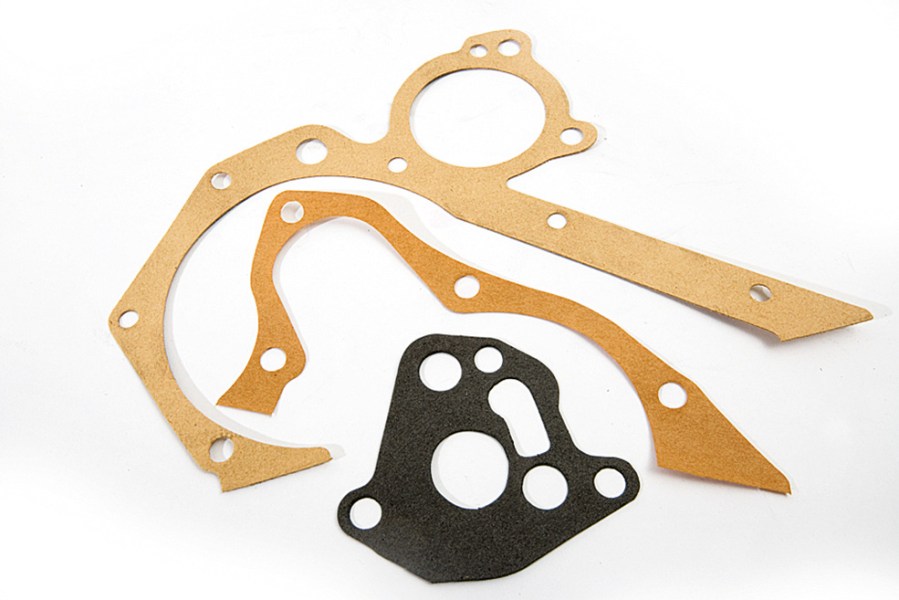
Types of Standard Gaskets
Before we start looking at the many different types of gasket available we need to understand what a gasket is and why it is needed. In short a gasket simply creates a seal between two mating surfaces. It does this by taking up the space caused by the imperfections of the two mating surfaces. Therefore most gaskets are effectively ‘crushed’ to create the seal when the two objects are bolted together. Because of this most can only be used once, and need to be replaced for new when removed.
In an engine, gaskets are needed to create seals for components dealing with oil, fuel, water and sometimes air. Therefore, different gaskets need to be made from different materials depending on their use. The most common types of gasket material include:
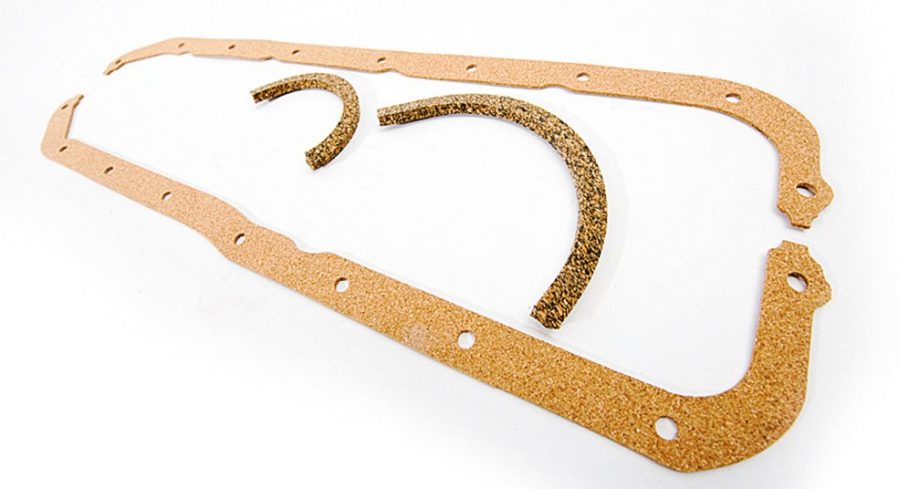
Cork
Cork gaskets are commonly used to create a seal between two steel surfaces when oil is present, for example rocker cover-to-head, and sump-to-block. The best material to use for this is cork as it is absorbent, has excellent crush capabilities, and is cheap and easy to produce.
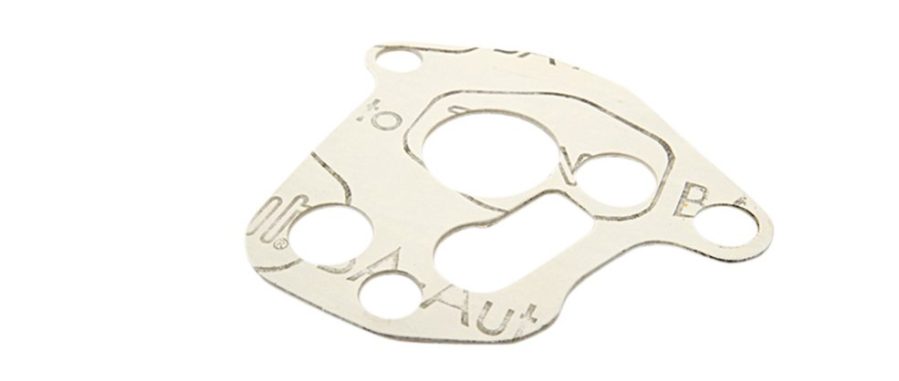
Paper
This is often used to prevent water leaks. Most commonly found in water pumps and thermostats, thin, water-resistant paper gaskets are ideal for sealing between two machined surfaces when water is present.
Fibre
Fibre gaskets and in particular washers are often used to create seals in fuel systems. They are impermeable to fuel, yet have excellent crush capabilities, which makes them ideal for use in conjunction with banjo bolts for components such as fuel pumps, fuel rails, etc.
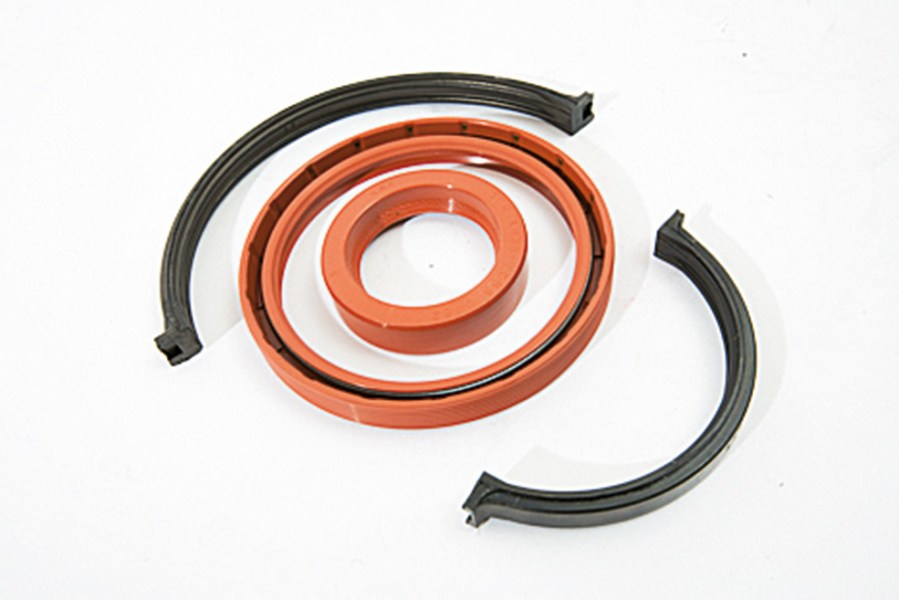
Rubber Seals
Rubber seals are often used to seal between a rotating assembly and a fixed object, such as crankshafts-in-block and camshafts-in-head. The outer casing of a rubber seal is usually rubber-coated steel, which presses into the fixed component to create a seal around the outer edge. The inner part of the seal is typically a rubber flange with a spring in it, which holds the inner edge of the seal onto the component running through it. This allows the inner component such as a crankshaft to rotate freely, while still retaining an oil-tight seal.
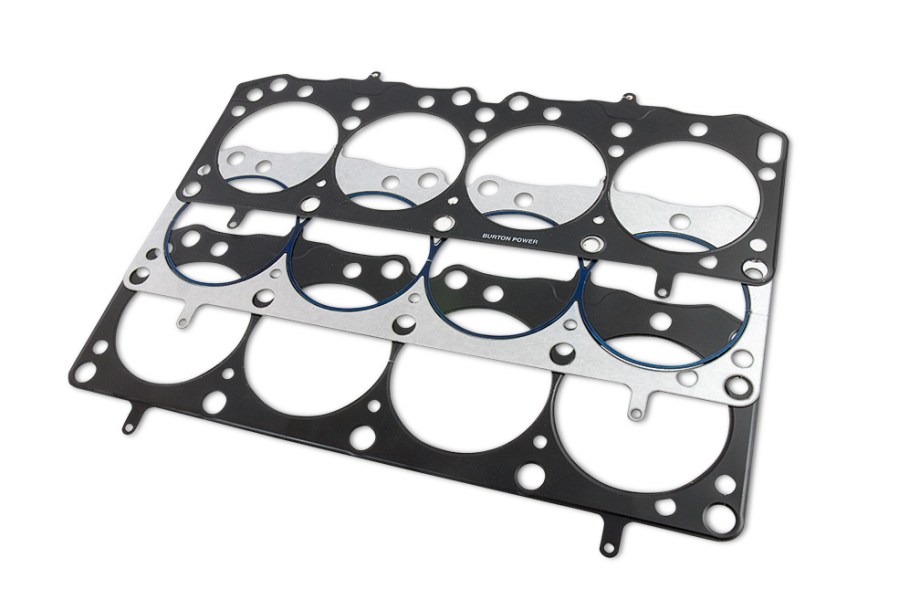
Performance Head Gaskets
There are quite a few different types of performance head gasket available. Group A uprated head gaskets are often seen as the first available upgrade. These are based heavily on the standard design, but are made from a more durable and more resistant composite material. They can therefore cope with the increased strains of a higher performance engine than the standard gasket, but are also a direct swap and operate in exactly the same way.
Coopers Rings
Another method of uprating the head gasket, which was particularly common in the mid-’80s, is to fit a set of Coopers rings. These replace the fire rings on a traditional head gasket with a much heavier-duty set of O-rings. The block needs to have a lip machined around the top of each cylinder to allow the Coopers rings to be fitted, and as the head is torqued down the rings will crush and deform to create a seal between the cylinder head and block. The resulting seal is much stronger than with a traditional head gasket, enabling far greater cylinder pressures to be reached without the head gasket failing.
This type of system was commonly used on race engines, and in particular high-boosting turbo engines. To accompany the Coopers rings a Group A-style head gasket without any fire rings can be used to seal the oil and water ways. Alternatively, some top-end motorsport engines didn’t use a head gasket as we know it at all. Instead, they used Coopers rings to seal against combustion, and the block was also machined to accept rubber O-rings around the oil and water galleries, therefore not needing a single-piece head gasket.
MLS Head Gaskets
However, Coopers rings are now seen as old technology, and many engine builders, including the guys at Burton Power, agree that for most engines a good multi-layer steel (MLS) head gasket will offer the same level of performance as Coopers rings, but without having to machine the block.
An MLS gasket is made up of multiple steel layers joined together to form a gasket. Burton Power stocks a complete range of Cometic MLS gaskets, so we were able to pull one apart to see exactly how they work.
The outer two layers of an MLS head gasket are embossed and on Cometic gaskets are covered in a flouroelastomer rubber-based material called Viton. These outer layers are what give the gasket its sealing properties. When the gasket is installed the embossed edges deform slightly to create a seal. The gasket’s strength comes from the centre layer, which is made from untreated stainless steel. The centre layer is also what gives the gasket its thickness, as this centre shim is available in a range of different sizes. Four-layer gaskets feature two centre shims as well as the two outer layers, with the extra centre layer offering even greater clamping pressure.
Gasket Thickness
According to Burton Power, Cometic gaskets are available off-the-shelf in sizes ranging from 1mm to 2.5mm thick, and can even be custom-made to any thickness required. Thicker gaskets are not necessarily stronger, but do offer the engine builder the chance to tweak the compression ratio easily after the head has been skimmed, or if a slightly lower comp ratio is required.
The Downside of MLS Gaskets
One downside to MLS gaskets is that, because they do not crush and therefore move about in the same fashion as a composite gasket, they are best used when the two mating surfaces have been machined totally flat. Fitting a steel gasket to a slightly uneven block or head surface could result in failure, whereas a composite gasket has more ‘give’ in it to accommodate these irregularities.
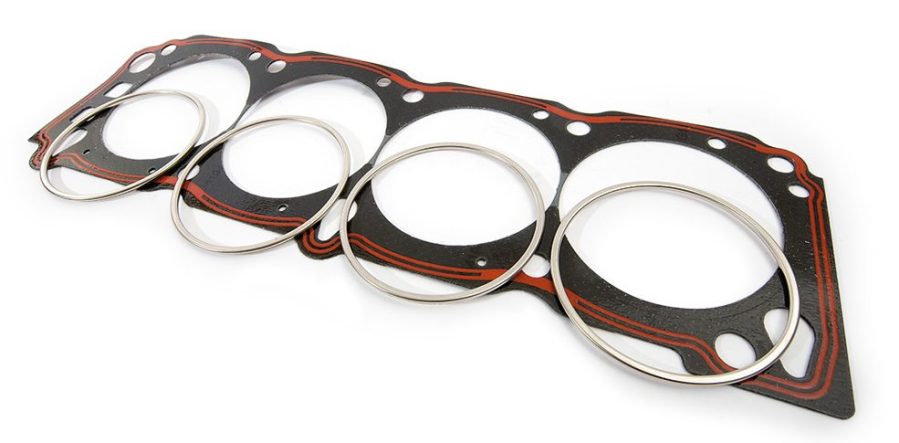
Types of Performance Head Gaskets
It’s not just head gaskets that are available as uprated items. In a highly tuned engine, all the gaskets are subjected to higher pressures and temps and so could potentially fail. As we have mentioned, different gaskets need to be made of different materials depending on what they are designed to seal. It’s the same story with performance gaskets, too, as one material may have excellent properties for coping with a particular task, but may be utterly useless in another area. Cometic offers a range of performance gaskets designed to suit almost every application where a gasket could be required. The main types of performance gasket available include:
Alumimum Foam Material (AFM)
A synthetic foam rubber bonded to an aluminum core. These are ideal for sealing many components, such as inlet manifolds and rocker covers, as the foam rubber compresses to create a seal.
CFM – 20
This is ideal for areas subjected to high temperatures, as the steel perforated core allows heat to be drawn across the gasket in a uniform fashion. It is also coated with an elastomer finish to help seal the two surfaces together effectively.
Spring steel
Very similar to the outer layers of an MLS head gasket, and work in the same way. They are ideal for sealing many component surfaces, especially those with high clamp loads.
Arimid Fibre
Gaskets are suited to high temperature areas and the high density of the woven fabric offers great resistance to tearing. Also, as the aramid is fuel resistant, this material is perfect for inlet manifold gaskets.
Armour Clad
A combination of fibrous material coated in a steel casing. They are capable of dealing with temperatures up to 2000 degrees Fahrenheit, and are easily compressed, making them ideal for sealing very uneven surfaces such as exhaust manifolds.
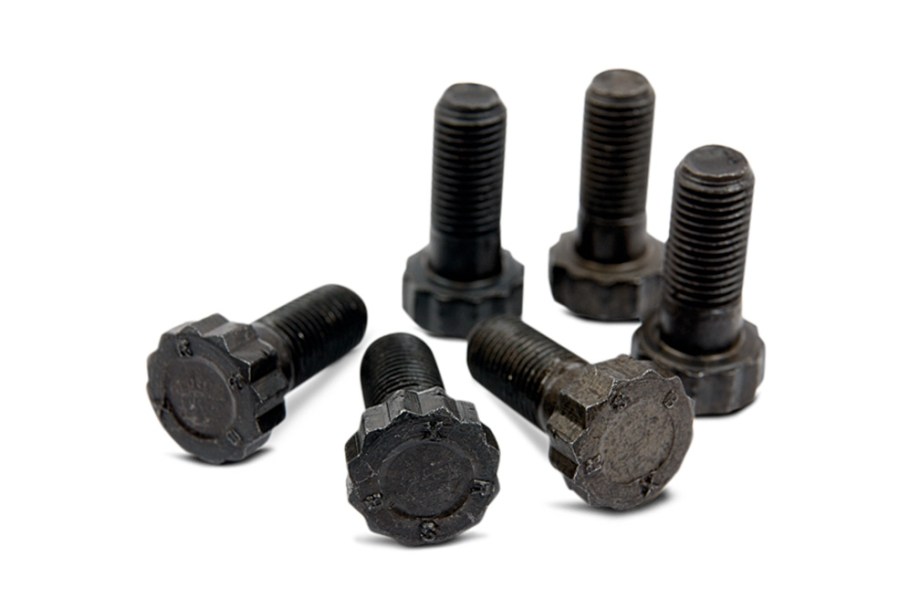
Fixing Head Gaskets into place
As well as the gaskets that fit in between engine components, the bolts that hold everything in place are also a critical part of a high-performance engine. What’s more, they are probably the most overlooked and underrated areas of a performance engine build.
It’s all well and good fitting performance engine components which allow you to extract more power and revs, but it all becomes worthless if the nuts and bolts that hold everything together fail.
That is why performance fixings from the likes of ARP are needed in highly tuned motors that are subjected to increased stresses and forces. Thankfully, Burton Power has a host of various standard and ARP fixings in stock for us to have a good nosey at and find out what they’re all about.
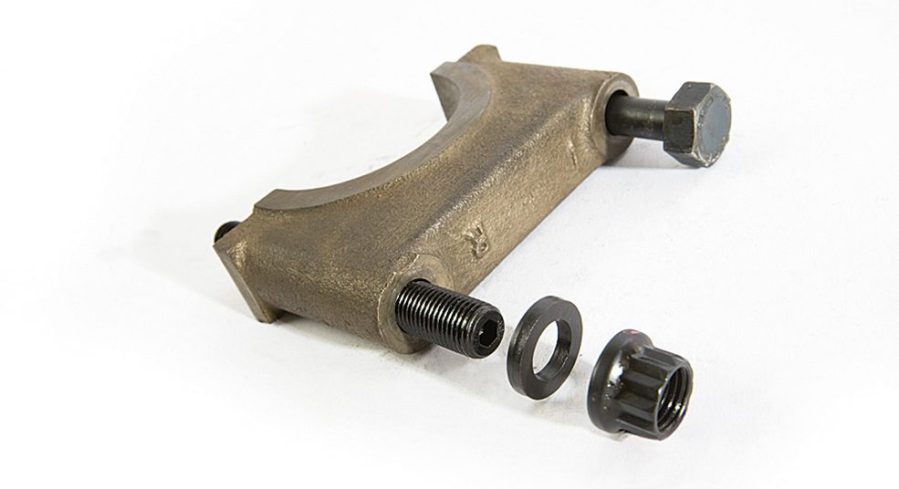
Stud-and-Nut kits
In some applications, replacing the standard, or even uprated, bolt with a stud-and-nut set-up offers greater clamping force and improved performance.
Typically, stud-and-nut kits are used where the torque required is very high, such as main cap bearings and clamping the cylinder head to the block. The original bolt is replaced by a stud which is threaded into the bolt hole and torqued up accordingly. The stud is also threaded on the other end, and a nut secures the component to be fixed. By doing this, the torque load is spread more evenly, and subsequently a greater clamping force can be achieved.
It is also possible to fit what are known as ‘long studs’, which is a common upgrade on the Cosworth YB engine. This involves machining the block to accept even longer studs than the original head bolts, and means the studs can be threaded into a much stronger area of the block. This then ties the whole engine together much better and therefore offers a far superior clamping force than that offered by the standard head bolt design.
Different forms of stud and nut kit are often used as standard fixings, for example fitting an exhaust manifold to an aluminum head. The reason for this is again due to the way a stud and nut spreads the torque load compared to a standard bolt. If the manifold was bolted directly to the head, the torque loads required, and the movement it would encounter when the manifold expands due to heat, would rip the threads out of the head. A stud and nut spreads this load much better, and keeps everything in one piece.
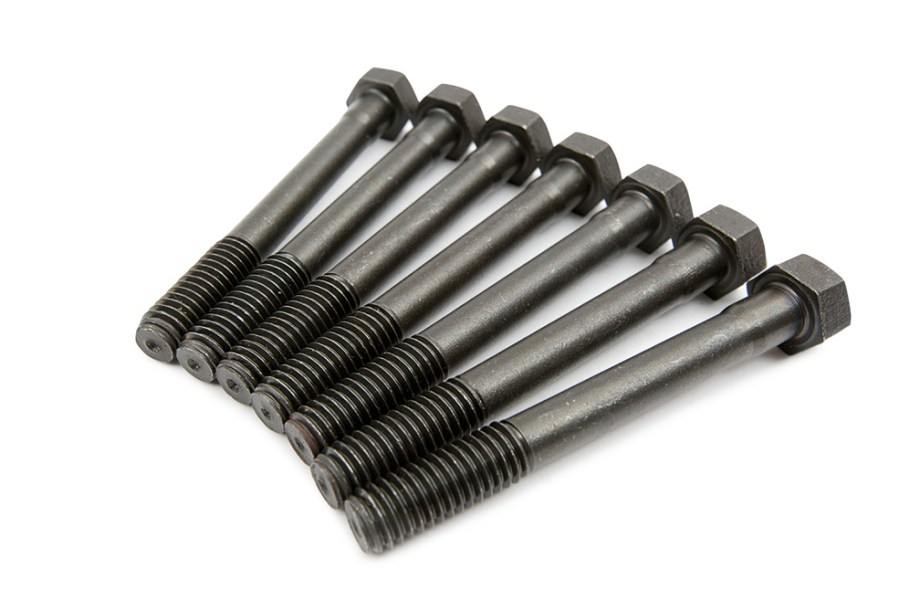
Stretch Bolts
Most standard head bolts are of a stretch bolt design. Unsurprisingly, they are given their name because they actually stretch slightly when they are fully tightened. This is why they need to be tightened in stages to a specific torque load, and then rotated a further 90 or 180 degrees to ensure they stretch the required amount. The main benefit of this is that the bolt doesn’t always require re-torquing after time, meaning it is more or less a fit-and-forget item.
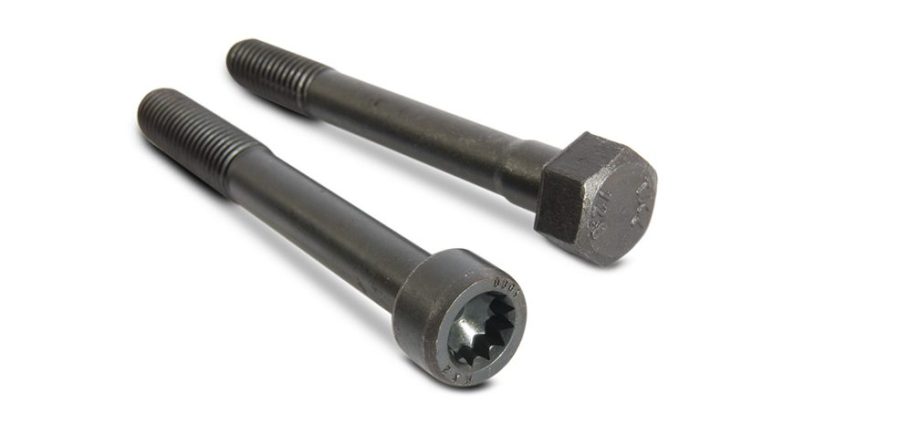
Bolt Head Design
You may have noticed there are many different types of bolt, and the head design differs quite dramatically. This is not by coincidence and is done for a reason. Sometimes it’s due to the available space – for example, some head bolts have an Allen-key-style bolt, which offers easier access compared to a hex-head bolt.
However, with most performance fixings the two most common types are known as ‘six-point’ and ‘twelve-point’. A six-point bolt has a traditional hexagon bolt head, whereas a twelve-point head-style features, as the name suggests twelve points rather than six.
Most ARP bolts now feature twelve-point heads as they offer twice the surface area for a socket to gain purchase from and therefore are less at risk of being ‘rounded-off’ when you tighten them up.

